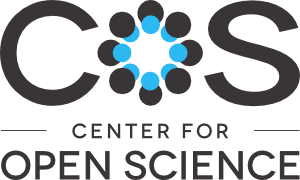Location
Our mission is to increase openness, integrity, and reproducibility of research.
These are core values of scholarship and practicing them is presumed to increase the efficiency of acquiring knowledge.
For COS to achieve our mission, we must drive change in the culture and incentives that drive researchers’ behavior, the infrastructure that supports their research, and the business models that dominate scholarly communication.
This culture change requires simultaneous movement by funders, institutions, researchers, and service providers across national and disciplinary boundaries. Despite this, the vision is achievable because openness, integrity, and reproducibility are shared values, the technological capacity is available, and alternative sustainable business models exist.
COS's philosophy and motivation is summarized in its strategic plan and in scholarly articles outlining a vision of scientific utopia for research communication and research practices.
Because of our generous funders and outstanding partners, we are able to produce entirely free and open-source products and services. Use the header above to explore the team, services, and communities that make COS possible and productive.
Members:
Resources
Displaying 146 - 150 of 447Cost- benefit analysis of the location of new forest land
In this paper we show how cost-benefit analysis can be used as a decision support mechanism for the location of new (urban) forest land, starting from the multifunctional role of these new forests. We start with a simple presentation of the cost-benefit analysis (CBA) technique. Key features of this evaluation technique are that (i) all - both positive and negative - impacts for all relevant parties (i.e. not only the project promoter) are taken into account and (ii) evaluation occurs on the basis of monetary values.
Policies for sustainable land management in the highlands of Ethiopia
land management, sustainable, policies, highlands, Ethiopia, Agricultural and Food Policy, Crop Production/Industries, Environmental Economics and Policy, Financial Economics,
OPTIMAL LAND MANAGEMENT WITH MULTIPLE CROPS
Abstract. This paper examines the optimal management of agricultural land through the use of non-crop inputs, such as fertiliser, and land uses that either degrade or restore productivity. We demonstrate the need to consider the relative total asset value of alternative crops over time. It is shown that higher prices for crops that degrade the resource base should motivate the use of short rotations with a remedial phase. An inability of land markets to reflect differences in resource quality and low capital malleability promote greater degradation.
Land registration and access to SME credit: preliminary findings
Most SMEs especially in the developing world are credit constrained which limits their ability to contribute to economic growth and poverty reduction. On one hand it is being argued in the literature that this credit constraint is attributable to the lack of collateral resulting from poverty and the lack of valuable assets; on the other hand the lack of collateral is blamed on the absence of registered titles over land which allegedly makes land an unacceptable collateral asset.
Innovative Land Administration Approaches for Sustainable Development: Belarusian Success Factors
Belarus has preserved its third position in Registering Property in the World Bank’s Doing Business 2014 report. Constant improvement of property registration procedures has allowed Belarus to achieve that. The Registering Property indicator takes into account three factors: the number of procedures required to transfer rights to property, the time spent on completing all the necessary procedures and the cost of procedures. From ”The Earth Summit“ in Brazil 1992 sustainable development recognized by almost all societies as one of the major global goals.


